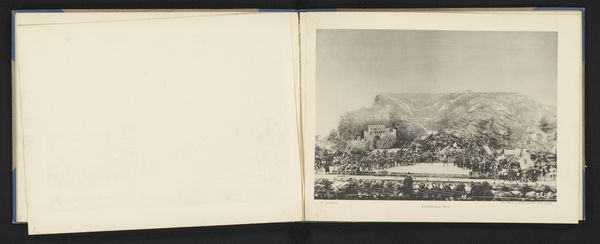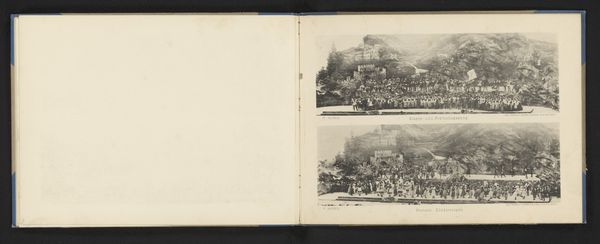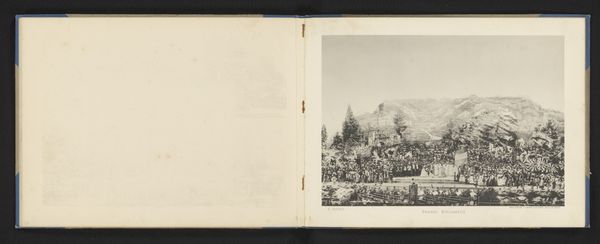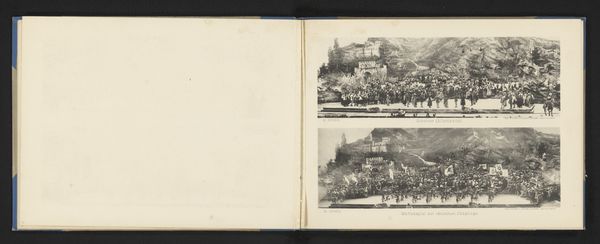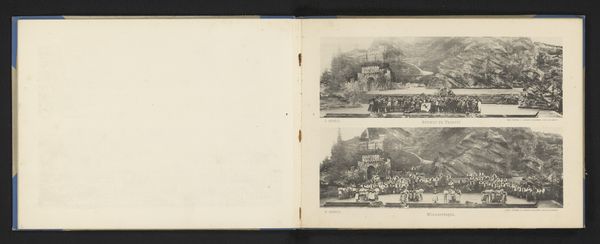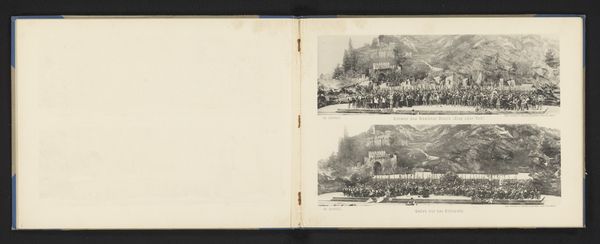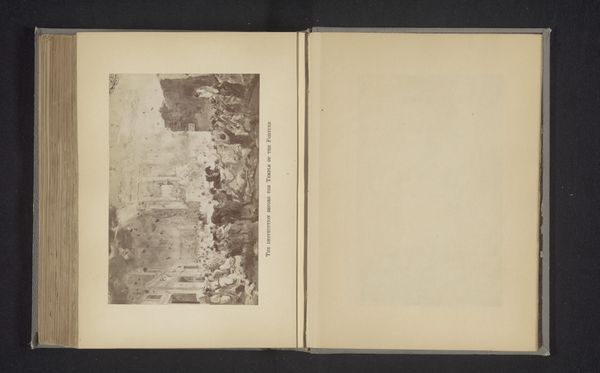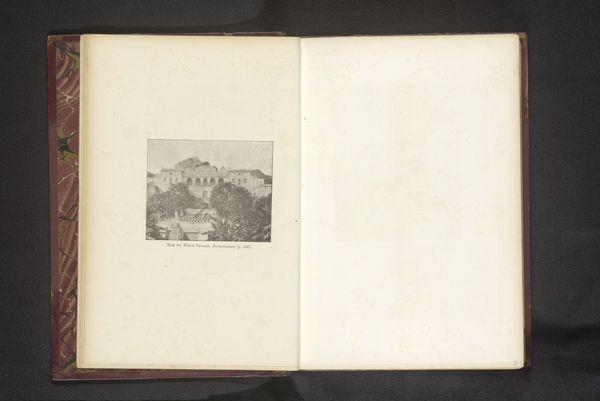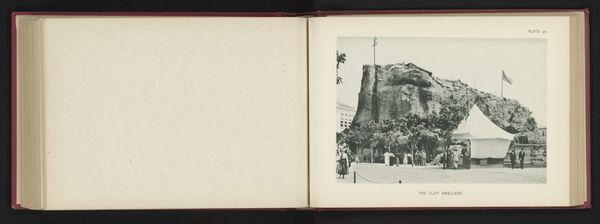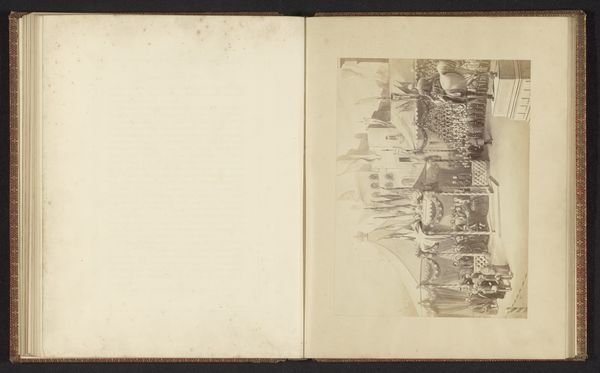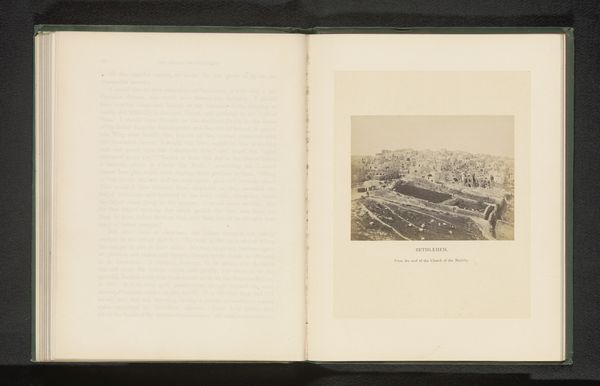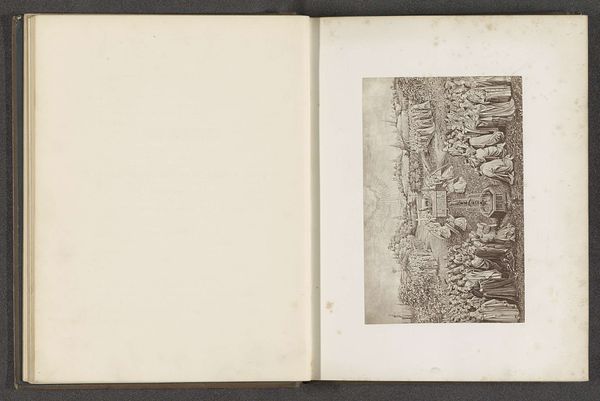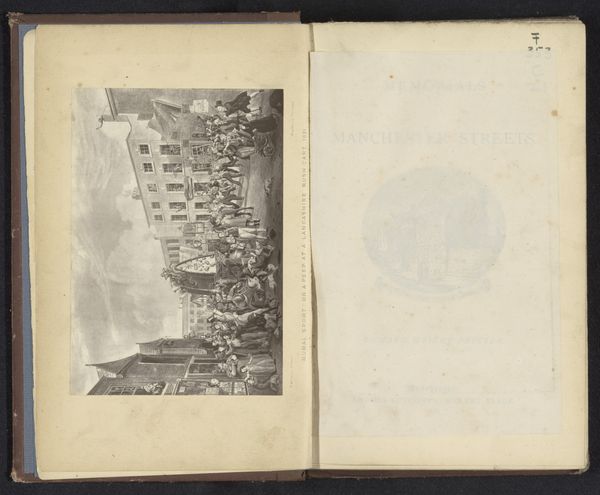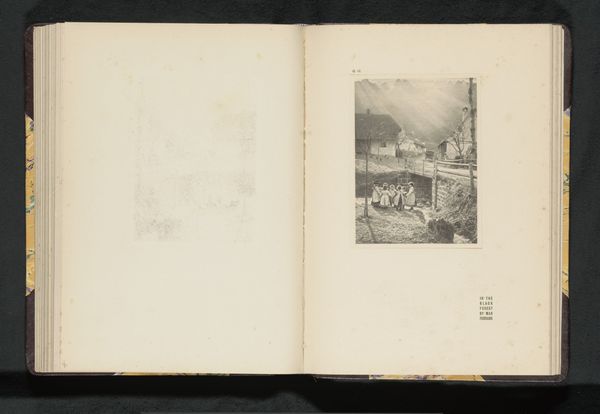
Gezicht op een optocht van muildierdrijvers tijdens de Calven-Feier te Chur before 1899
0:00
0:00
print, photography
# print
#
landscape
#
photography
#
mountain
Dimensions: height 178 mm, width 254 mm
Copyright: Rijks Museum: Open Domain
Curator: Looking at this piece, "Gezicht op een optocht van muildierdrijvers tijdens de Calven-Feier te Chur," which translates to "View of a procession of muleteers during the Calven Feast in Chur," created before 1899 by Lienhard & Salzborn, what’s your first impression? Editor: The vastness! The composition feels dominated by the landscape itself. It has an airy quality, with layers of people almost dissolving into the mountainous backdrop. It definitely communicates something about man’s relationship to the imposing landscape. Curator: Indeed, and it is important to note its creation through photography, a medium enabling the broad dissemination of imagery. Photographs like these offer an opportunity to explore material production in an increasingly industrial age, especially within a region like Chur, Switzerland. How might the mechanical reproduction here play a part? Editor: Well, thinking about the social context, these images offered more than mere scenic views. They potentially fostered a sense of communal identity during an era of evolving nationalisms. What story do you see here? Is it pageantry, commerce, identity? Perhaps all? Curator: The procession itself, with its display of labor and resources, emphasizes local trades and economy. One wonders about the commissioning of this specific view, before 1899. This feast as commodity is circulated on mass print… Editor: Right. And if we shift our gaze towards the “muleteers”, the human aspect of the procession, can we see the echoes of class structures? How does a feast day temporarily mask inequalities of labor by commodifying it into a consumable image? Curator: It also might hint at cultural exchange—mules traversing diverse terrains speak to broader interactions within the Swiss Alps, and its economy and industries. It's a layered documentation of a society. Editor: Exactly. The image raises some important questions: what performative roles are adopted on feast days, how are images deployed to communicate social messaging, and, fundamentally, how do all the elements that surround art affect it? Curator: Seeing it through both our perspectives really illuminates the nuances embedded within this early photograph. From a mere representation of landscape, it transforms into something so much richer. Editor: Yes, it reminds me that every piece carries an intersection of ideas about identity and the role of labour, class, gender. It encourages me to stay inquisitive about the conditions from which each element comes.
Comments
No comments
Be the first to comment and join the conversation on the ultimate creative platform.
